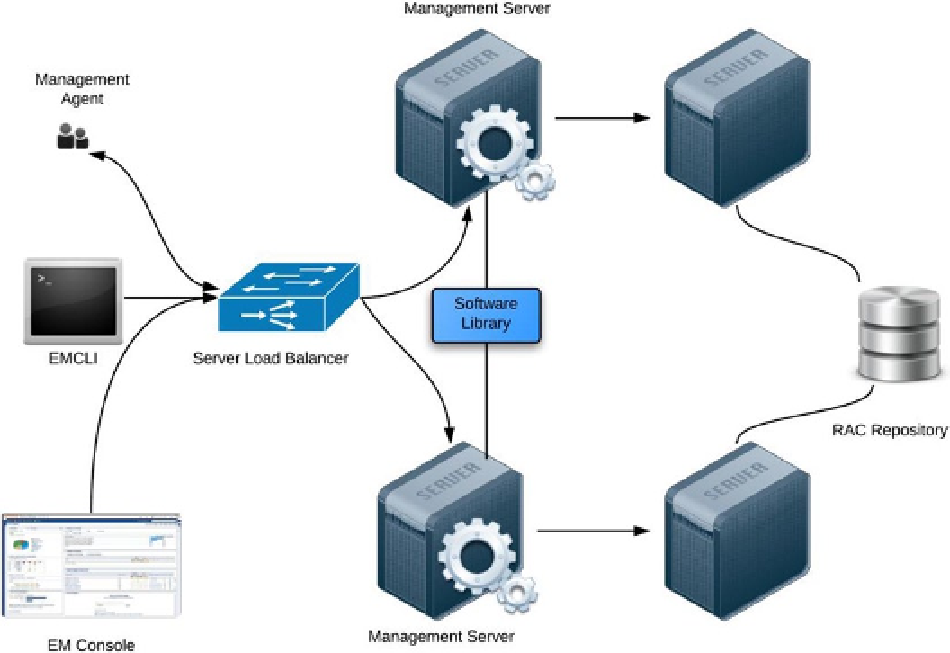Database Reference
In-Depth Information
RAC provides both high availability and scalability for the database. You could also consider an active/passive RAC
One Node
7
configuration. Additionally, a local physical standby is used to protect the database in the event of a
database storage failure. The management services are located behind a Server Load Balancer (SLB). The SLB then
directs traffic from the Enterprise Manager console and management agents to an available OMS. Each management
server can be installed on separate hosts from the RAC nodes (see Figure
13-16
). However, you may need to balance
the costs of having separate servers and the level of protection needed for such a configuration. The management
servers and repository databases should be in close proximity to each other to reduce network latency. This may
dictate that the management servers and RAC database instances coexist on the servers.
Figure 13-16.
Level 3 high availability with multiple OMSs configured behind a Server Load Balancer and a RAC
database management repository
This level of availability also provides the ability to scale based on business requirements. More OMS servers can
be added to scale out, while nodes can be added to the RAC database to scale the repository.
The steps required in setting up a level 3 high-availability configuration are listed here:
1.
Install the primary OMS.
2.
Configure the SLB.
3.
Add repository targets.
7
Oracle RAC One Node is a new option available with Oracle Database 11g Release 2. Oracle RAC One Node is a single instance
of an Oracle RAC-enabled database running on one node in a cluster.

